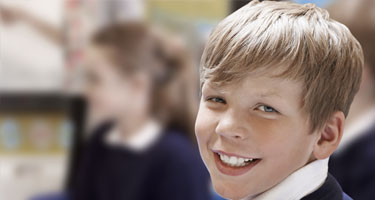
The School Uniform – where did it all start?
As the new academic year looms, parents will be frantically kitting their future generations out with a smart new school uniform as, most local schools now encourage a standardised image for their pupils. So where did the notion of the school uniform derive from?
There is evidence that school uniforms have been around for centuries; According to ProCon.org, the first recorded use of school uniforms was in England back in 1222. Students at one particular school were required to wear a robe-like outfit called a ‘cappa clausa.’ However, it wasn’t until much later in the 16th century that modern school uniforms made an appearance in recorded history.
During this time, Christ’s Hospital boarding school stipulated uniforms that were provided from donated garments which consisted of a blue cloak and yellow stockings, thus earning charity schools like Christ’s Hospital the nickname ‘blue cloak’ schools. The Tudor style blue coat, knee breeches and yellow stockings are still worn today at Christ’s Hospital, Horsham – the ‘Bluecoat School’, which opened in London in 1552.
However, regulation uniforms in a designated colour and/or standardised style were relatively uncommon before the nineteenth century. The gradual emergence of a smart, recognisable uniform for Victorian school boys was influenced by various factors: the development of civilian uniforms and the growing sobriety and uniformity of male fashion.
Later, school uniforms became associated with the upper classes as private and preparatory schools began to use them more. Uniforms at these schools were incredibly formal. For example, ProCon.org notes that students at the prestigious Eton College were required to wear a black top hat and tails as their uniform up until 1972.
Elementary-school girls wore dresses that followed fashionable lines, the loose calf-length smock frock of the 1890s and early 1900s, protected beneath a white or coloured pinafore, giving way to shorter shift-style dresses during the 1920s. By the First World War older schoolgirls typically wore a plain tailored calf-length skirt and often a masculine-style shirt and tie: by this time many middle-class families were sending their daughters to boarding schools.
Today, many students attending elementary and secondary schools in England are required to wear uniforms. The tradition began as a way to give schools a sense of identity and cohesion and that objective still runs true today as school uniforms help to bring equality to the students regardless of their parents’ wealth.
In the past several years, uniforms have become more modern. Instead of the traditional uniform of a blazer and tie in a thick heavy fabric, T-shirts or polo shirts and sweatshirts in school colours have become standard.
In England, uniform policy conjures up visions of rules, punctuality and obedience, however the school uniform was first worn by orphans representing the ‘lower classes’, which soon became a standard for the rich, almost becoming a status symbol of fineness and superiority.
In the US, uniforms are a relatively new phenomenon only being introduced less than 40 years ago primarily to tackle the problems of violence amongst students who fought for designer clothes; it was also an attempt to curb the gang war problems. Surprisingly statistics indicate that only 25% of primary and 10% of secondary schools in the US have rigidly implemented the uniform policy.
In other countries such as Pakistan, India, Thailand and Indonesia school uniforms were introduced during the British colonial period. In these countries girls usually wore ‘salwar kamiz’ and the boys wore trousers and shirts. In New Zealand and Australia where the British colonial rule was in effect, the uniform system was followed in the public schools following similar rules to those in England.
So it would seem that the school uniform does have historical roots and the purpose for having one has not changed much over the centuries. Whether you feel that it means that pupils lose a sense of individuality, it is hard to argue that it does bring a sense of equality amongst the social classes and teaches young people to importance of portraying a professional image which surely can only aid them in their future careers.














